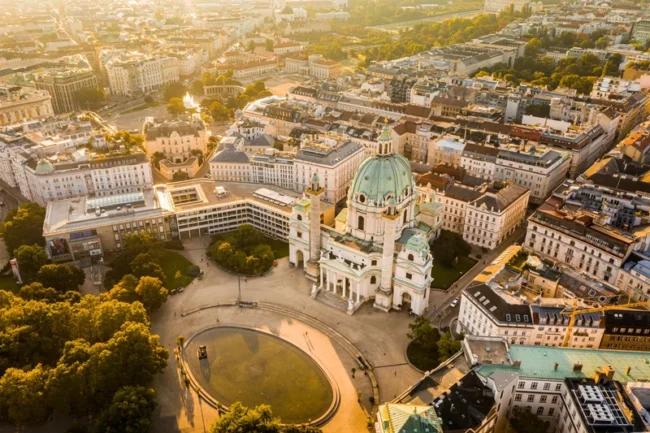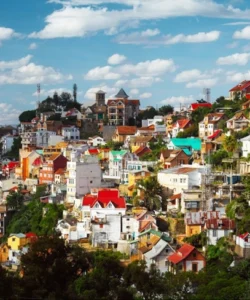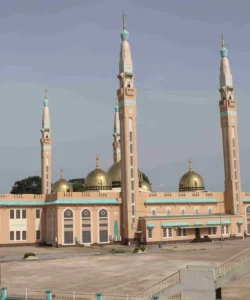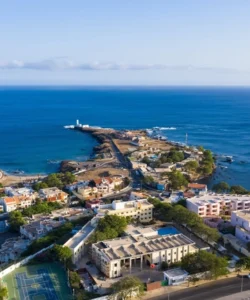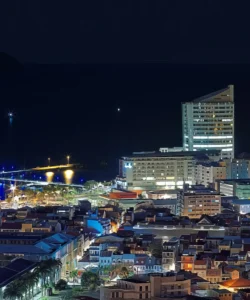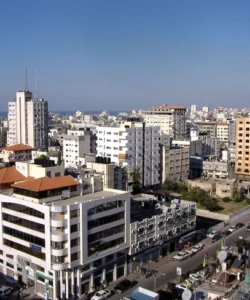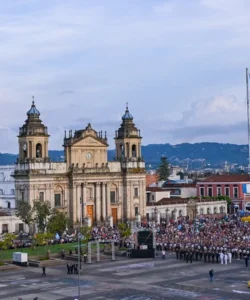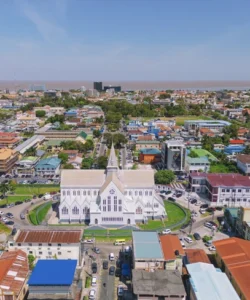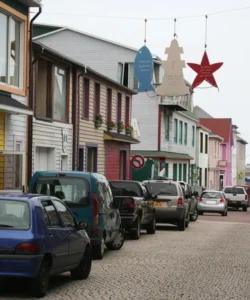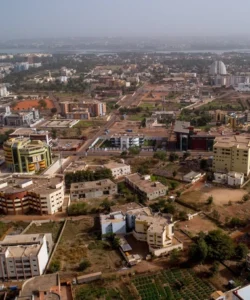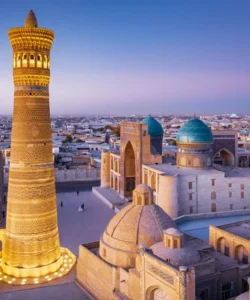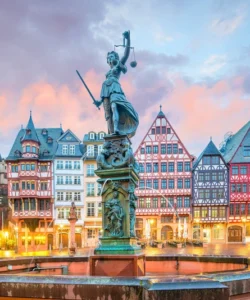Austria, officially the Republic of Austria, is a landlocked country in Central Europe. It borders Germany and the Czech Republic to the north, Slovakia and Hungary to the east, Slovenia and Italy to the south, and Switzerland and Liechtenstein to the west. Austria is renowned for its stunning Alpine landscapes, rich imperial history, world-class classical music heritage, and elegant cities.
Area: Approximately 83,879 square kilometers (32,386 sq mi).
Population: As of 2023, the population is estimated at around 9.1 million.
Language: The official language is German (specifically Austrian German). English is widely understood, particularly by younger generations and in urban and tourist areas.
Currency: The official currency is the Euro (EUR).
Religion: The predominant religion in Austria is Roman Catholicism. There are also smaller communities of Protestants (mainly Evangelical Church A.B.), Orthodox Christians, and Muslims. A growing portion of the population identifies as non-religious.
Capital: Vienna is the capital and largest city of Austria. It is consistently ranked among the world’s most livable cities, famous for its magnificent imperial palaces, grand boulevards, vibrant cultural scene (especially classical music and opera), and charming coffee house culture.
Major Cities: Besides Vienna, other significant cities include Graz, Linz, Salzburg, Innsbruck, and Klagenfurt.
Attractions & Wonders: Austria offers a wealth of historical, cultural, and natural attractions:
- Vienna:
- Schönbrunn Palace: A UNESCO World Heritage site, the opulent former imperial summer residence of the Habsburgs, with magnificent Baroque architecture and extensive gardens.
- Hofburg Palace: The former imperial palace in the heart of Vienna, housing numerous museums, including the Sisi Museum and the Imperial Apartments.
- St. Stephen’s Cathedral (Stephansdom): A Gothic masterpiece and a prominent symbol of Vienna, offering panoramic views from its South Tower.
- Belvedere Palace: A Baroque palace complex housing a superb art collection, including Gustav Klimt’s “The Kiss.”
- Prater Amusement Park: Home to the iconic Giant Ferris Wheel (Riesenrad).
- Ringstrasse: A grand boulevard encircling the city center, lined with magnificent buildings like the Vienna State Opera, Parliament, Rathaus (City Hall), and Burgtheater.
- Spanish Riding School: Famous for its Lipizzaner horses and classical dressage performances.
- Naschmarkt: Vienna’s largest and most popular outdoor market, offering diverse culinary delights.
- Salzburg: A UNESCO World Heritage site, the birthplace of Wolfgang Amadeus Mozart.
- Hohensalzburg Fortress: A magnificent medieval fortress overlooking the city.
- Mirabell Palace and Gardens: Famous for their Baroque beauty and as a filming location for The Sound of Music.
- Mozart’s Birthplace and Residence: Museums dedicated to the life of the famous composer.
- Hallstatt-Dachstein / Salzkammergut Cultural Landscape: A UNESCO World Heritage site, a breathtaking Alpine region with picturesque villages, dramatic mountains, and pristine lakes. Hallstatt village itself is iconic.
- Innsbruck: Located in the heart of the Alps, a popular destination for skiing and hiking, known for its Golden Roof (Goldenes Dachl) and imperial history.
- Grossglockner High Alpine Road: Austria’s highest mountain pass road, offering spectacular views of the Grossglockner mountain and surrounding glaciers.
- Danube Valley (Wachau Valley): A UNESCO World Heritage site, known for its picturesque vineyards, charming villages, and medieval castles.
- Melk Abbey: A magnificent Benedictine abbey overlooking the Danube River in the Wachau Valley, a prime example of Baroque architecture.
- Graz: A UNESCO World Heritage city, known for its charming Old Town, Uhrturm (Clock Tower), and modern architectural landmarks.
Architecture: Austrian architecture is renowned for its grandeur and diversity, reflecting centuries of imperial rule and artistic movements:
- Romanesque and Gothic: Seen in early churches and some remnants of castles.
- Baroque and Rococo: The dominant styles, particularly during the Habsburg Empire, resulting in magnificent palaces, churches, and urban developments (e.g., Schönbrunn, Hofburg, Belvedere, Melk Abbey).
- Neoclassical: Prominent in 19th-century public buildings and some residential areas.
- Historicism and Eclecticism: Late 19th century, seen in the grand buildings of the Vienna Ringstrasse, often blending various historical styles.
- Art Nouveau (Secession): Vienna was a major center for this artistic movement (e.g., Secession Building, Otto Wagner’s Post Office Savings Bank).
- Modernism and Contemporary: Austria continues to produce innovative modern architecture, with a focus on functionality and sometimes striking designs.
Roads: Austria has an excellent and highly developed road network. Motorways (Autobahnen) and expressways (Schnellstraßen) are extensive, well-maintained, and connect all major cities and neighboring countries efficiently. Secondary roads are also generally in very good condition. Driving is efficient, but be prepared for mountain passes in Alpine regions. A toll vignette (Autobahnvignette) is required for motorways and expressways.
Hotels: Austria offers a wide range of accommodation options. In major cities like Vienna, Salzburg, and Innsbruck, you’ll find luxurious five-star international hotels, charming boutique hotels, traditional guesthouses (Gasthäuser), and budget-friendly hostels. In Alpine regions, there are numerous ski resorts with hotels, traditional chalets, and mountain lodges. Throughout the country, you can find quaint bed & breakfasts, farm stays (Urlaub am Bauernhof), and elegant spa hotels.
Restaurants: Austrian cuisine is hearty and comforting, with strong influences from the former Austro-Hungarian Empire (German, Hungarian, Czech, Italian). It features rich flavors, meat, potatoes, dumplings, and exquisite pastries.
- Vienna is a culinary capital, famous for its coffee house culture and traditional Beisl (pubs/restaurants), alongside fine dining and international cuisine.
- Traditional Austrian Dishes:
- Wiener Schnitzel: The iconic dish – a thin, breaded, pan-fried veal cutlet, traditionally served with lemon and potato salad or lingonberry jam.
- Tafelspitz: Boiled beef in broth, typically served with root vegetables, horseradish, and apple sauce.
- Sachertorte: A famous Viennese chocolate cake with apricot jam and dark chocolate icing.
- Apfelstrudel: A classic apple strudel, often served warm with vanilla sauce or ice cream.
- Kaiserschmarrn: A fluffy, shredded pancake, often caramelized, served with fruit compote.
- Knödel: Various types of dumplings, savory (e.g., bread dumplings with meat) or sweet (e.g., plum dumplings).
- Goulash (Gulasch): A popular meat stew, usually beef, often served with bread or dumplings (different from Hungarian goulash).
- Frankfurter Würstel: Thin parboiled sausages, often served with mustard and bread.
- Käsespätzle: A delicious dish of soft egg noodles with cheese and fried onions, similar to Mac & Cheese.
- Coffee House Culture: Integral to Austrian (especially Viennese) social life, offering a wide array of coffee preparations and pastries.
- Wine: Austria produces excellent white wines (Grüner Veltliner) and some noteworthy reds.
- Beer: Popular, with various local breweries.
